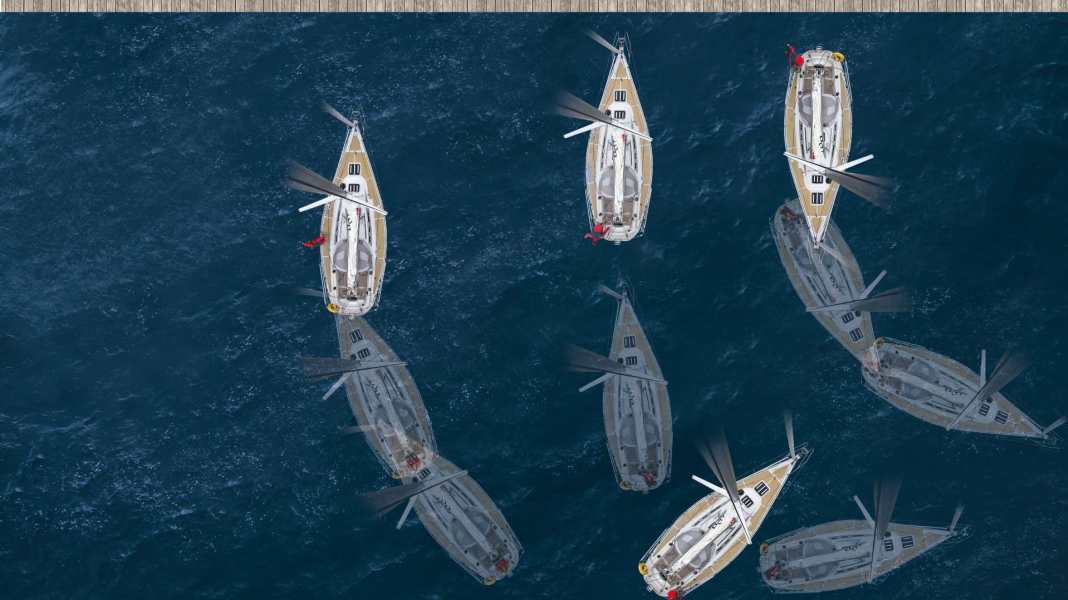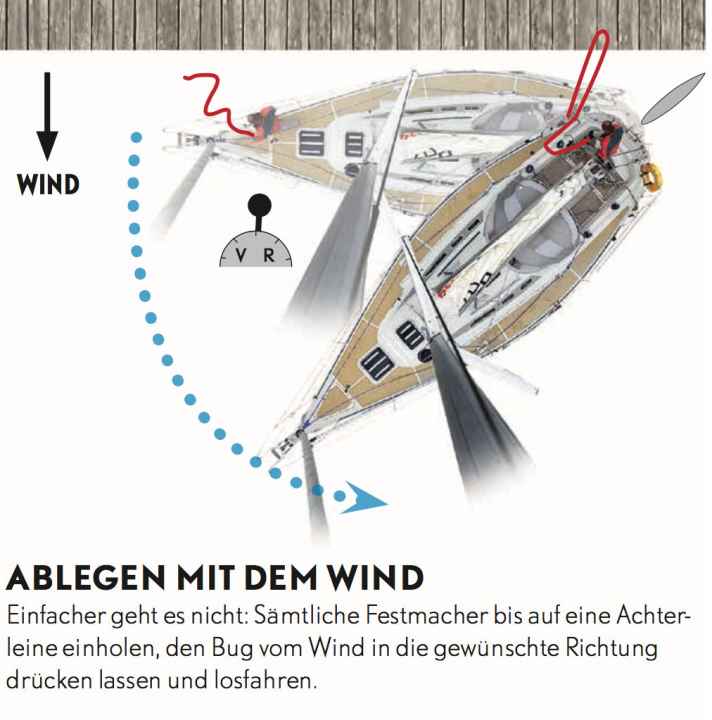Manoeuvring: Harbour manoeuvres: 6 techniques for single-handed sailors

Those who deliberately travel alone have a clear advantage in the harbour. He or she can adapt to the special challenges that arise when manoeuvring. The lack of hands on board can be replaced by assistance systems such as bow or stern thrusters. The berth, especially if it is equipped with piles, can be fitted with mooring ropes. All of this can be planned and prepared in advance. However, even experienced single-handed sailors can get into trouble if the wind in the harbour is suddenly stronger than forecast or if the assistance systems fail - which nobody should rely on one hundred percent anyway.
What happens if a scheduled co-sailor is injured and can no longer help? Age can also make it impossible to follow the usual procedures on board. If agility and strength can no longer be called upon as in previous years, it may be worth thinking about new departure and mooring options that no longer require the involvement of crew members.
The good news is that none of these cases has to mean the immediate end of a cruise or even the hobby. There are many ways to manoeuvre a yacht safely in the harbour without exerting force or acting quickly on deck. In almost all cases, it comes down to manoeuvres with lines, often very long lines. Because if no other crew member can release a bow line, for example, and there is no one on land to take over, the skipper simply has to do it himself.
With the following six scenarios for single-handed offshoots, you are well prepared even for difficult conditions. Click on the images to enlarge the texts and manoeuvre sequences.

Super simple: The stern line remains in place and the boat is pushed away from the pier by the wind. When turning, make sure there is enough space between the stern (especially on boats with a bathing platform!).

No round bow and older design with a narrow stern? Then it can work with a fore spring and the stern into the wind.

The wider the rear, the greater the leverage.

Caution: casting off against the wind with a stern line is only recommended for yachts with a wide stern.

If the wind is on the box, it can be difficult to make the turn after passing the poles.

With a deflected auxiliary line, it is easy to get out of the box, even in a strong breeze over the forestay.
